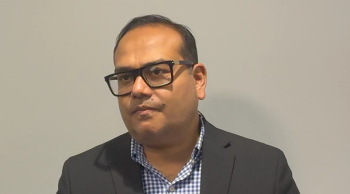
Adjuvant Bevacizumab Fails to Help in High-Risk Breast Cancer
The addition of bevacizumab to adjuvant chemotherapy regimens does not improve survival in women with high-risk breast cancer.
The addition of bevacizumab to adjuvant chemotherapy regimens does not improve invasive disease–free survival (IDFS) or overall survival (OS) in women with high-risk HER2-negative breast cancer, according to a large randomized trial.
“Bevacizumab … improves response rate and progression-free survival, although not OS, when combined with chemotherapy in patients with metastatic breast cancer lacking overexpression of the human epidermal growth factor 2,” wrote study authors led by Kathy D. Miller, MD, of the Indiana University Melvin and Bren Simon Cancer Center in Indianapolis. “We hypothesized that the most successful clinical application of angiogenesis inhibitors would be in patients with micrometastatic rather than macrometastatic disease, which is to say in the adjuvant setting.”
The E5103 trial was designed to test that hypothesis. It was a double-blind phase III trial that randomized a total of 4,994 patients to 1 of 3 study arms. In arm A, 1,000 patients received placebo along with doxorubicin and cyclophosphamide (AC) followed by weekly paclitaxel; in arm B’s 1,986 patients, bevacizumab was added to the AC regimen and this was followed by paclitaxel along with bevacizumab; and for arm C’s 2,008 patients, bevacizumab was added to AC and to the subsequent paclitaxel and this was followed by 10 cycles of maintenance bevacizumab. The results of the trial were
The median age in the full trial was 51.7 years, and 85% of the cohort was white. Most patients had lymph node involvement (73%), and 64% were estrogen receptor– and/or progesterone receptor–positive. All patients had a substantial risk of recurrence based on several factors.
The 5-year IDFS rate was 77% in arm A, 76% in arm B, and 80% in arm C. Neither univariate nor multivariate analyses revealed any significant differences between these results.
For OS, after a median follow-up of approximately 47.5 months, the 5-year OS rate was 90% for arm A, 86% for arm B, and 90% for arm C. Again, comparisons of these outcomes showed no significant differences between the groups.
Importantly, treatment exposure was less than expected. The addition of bevacizumab made it less likely that patients completed chemotherapy, with 18.3% discontinuing therapy in arm A compared with 26.3% and 28% in arms B and C, respectively. Of those who began treatment in arm C, 40% did not proceed to bevacizumab maintenance therapy, most often as a result of patient withdrawal or refusal, or toxicity.
Of all bevacizumab-treated patients, 8% experienced grade 3 hypertension, and bevacizumab monotherapy was associated with an ongoing risk of hypertension and other toxicities. The risk of treatment-related death was similar across the treatment arms. At 15 months, the cumulative incidence of clinical congestive heart failure was 1.0% in arm A compared with 1.9% and 3% in arms B and C, respectively.
“E5103 adds another cautionary note to those who have embraced an improvement in pathologic complete response as predictive of longer-term benefit,” the authors wrote. “When viewed within the context of similar negative trials in patients with HER2-positive breast cancer, colon cancer, melanoma, and lung cancer, we have no choice but to conclude that the underlying hypothesis, namely that inhibiting VEGF would be most effective in the adjuvant setting, is simply wrong.”
Newsletter
Stay up to date on recent advances in the multidisciplinary approach to cancer.



















































































